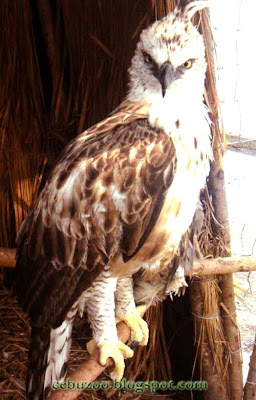Parrots are one of the most famous colorful bird pets in the world. They consist of more than 300 species in the wilderness with size and color variances from one specie to another. The are considered the most common birds that are spread throughout the world and are easily identified through their beautiful vivid colors, crests and curved beaks. They are commonly found in continents of Asia, America, Africa and Australia.
he parrot family are classified into two which consist of the true parrots named Psittacidae and the cockatoos which are named Cacatuidae. What we are into right now are the “true parrots” which are commonly or simply called as "Parrots". These birds naturally stand in a sturdy upright position. They have very strong feet and curved bills which easily make them easy to be identified from other birds.
 |
| An Eclectus Parrot in Cebu Zoo. |
Most parrots usually eat seeds. Some of them feed on fruits, nuts,small insects and leaves.
Parrot are also among of the most intelligent birds since they can imitate and mimic distinct sounds, words and human voices.
These birds are highly considered to be one of the best pet for animal lovers. They can amuse grown ups and children with an exceptional number of acrobatic skills like riding a small bicycle, walking through wires and identify shapes and colors.
Parrot birds naturally does not go on the wild alone and normally fly in pairs. They love to be with a mate especially in captivity. They nests on cavities of trees and cliffs on the wild. The number of eggs they lay varies according to specie ranging from 2 to 6 per nesting period with an incubation period of 17 to 35 days.
It is wise to have parrot in pairs if you are planning to be a parrot owner.
You can consider Cebu Zoo a parrot sanctuary since several specie of this birds are kept in captivity.
You can consider Cebu Zoo a parrot sanctuary since several specie of this birds are kept in captivity.
 |
| An actual photo of a parrot in Cebu Zoo. |













